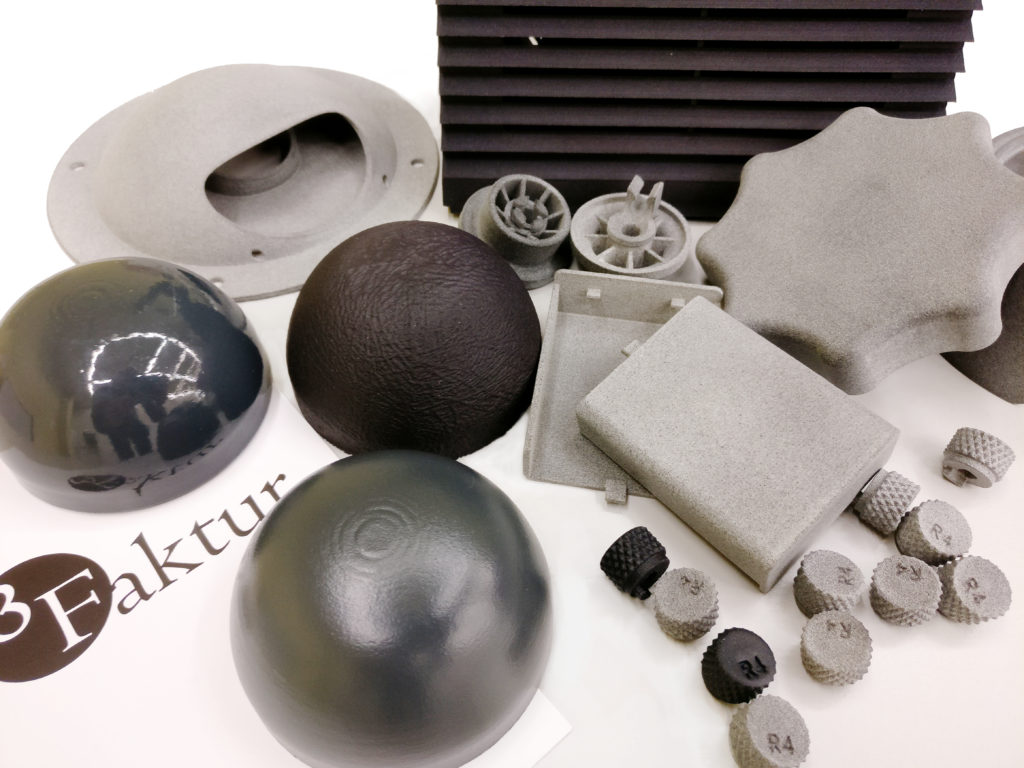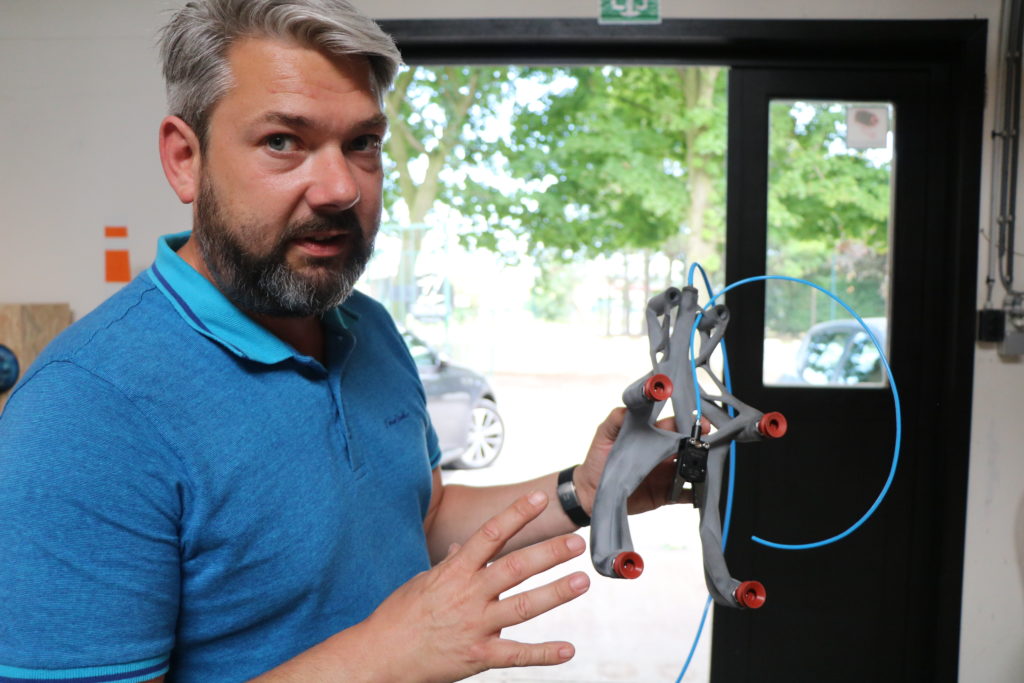Like so many other groundbreaking technologies, there is a need to strike a fair balance between what additive manufacturing technology is capable of doing and what is merely impossible. Several challenges in various sectors of the industry still need to be overcome, but one of the most important is to be able to separate the myth from reality. Markus May from 3Faktur and Jo De Groote from ZiggZagg draw on their own industry experience to address the common misconceptions and stereotypes at this current stage of the market.
3Faktur and ZiggZagg are two 3D Printing service bureaus. The first one is based in Germany, and the second one is based in Belgium. Both companies mainly rely on HP’s MJF technology to provide their clients with additive manufacturing services. Other technologies include Stereolithography machines and some conventional manufacturing systems.
3Faktur delivers its services to clients across a wide range of sectors: automotive, medical, machinery, defence, consumer goods, optical and high-tech. ZiggZagg on the other hand, targets the injection moulding industry, aerospace, design bureaus in addition to consumer goods, automotive and medical.
Markus May is the founder and CEO of 3Faktur, whereas Jo De Groote is the Sales Manager of ZiggZagg.
Given their extensive experience in the industry, 3D Printing service bureaus are uniquely positioned to have an objective opinion on this topic.

So, what’s the client’s mindset?
Two main reasons can explain why misconceptions and stereotypes might hold back the use of industrial additive manufacturing:
- The first one is the lack of knowledge. Professionals that are in their way to adopt additive manufacturing may have many ideas regarding the use of technology. Most of these ideas are not true because they come from their imagination rather than real facts and studies.
- The second reason is that potential industrial users sometimes have already experienced 3D Printing at home. In that case, they mentally map their experience with 3D home printing into the more formal additive manufacturing of critical components in a production environment.
Speaking of their clients, Markus May explains that, “some less experienced clients tend to think that 3D printing is mainly a technology for ‘hobbyists. Others, however, believe 3D printing can be used for anything, even printing complex multi-material parts with included electronics.”
For Jo De Groote, having “a variety of customers who already have an experience in Additive Manufacturing is much easier when providing a 3D printing service. In fact, when the customer does not know anything about additive manufacturing, much work needs to be done to convince him to delve into the technology.”
Additive Manufacturing is another type of traditional manufacturing
A significant number of articles have suggested that AM will replace conventional/traditional manufacturing. Those who are familiar with AM see it as complementary to conventional manufacturing, whereas those who are not familiar with it see it as another type of conventional manufacturing.
“Before supplying any service to a client that already leverages conventional manufacturing processes, we first visit their manufacturing facility. Their manufacturing facility will tell you how they think. Our observation so far is they are traditionally mechanically trained. So, every question related to a new approach of manufacturing will only result in an answer based on a conventional way of thinking (e.g. remove powder). It is understandable, but on the other hand, it leads to a misconception in a first attempt to explore industrial additive manufacturing”, explains the Sales Manager from ZiggZagg.

The truth?
AM is a distinct and unique manufacturing process. Some parts can only be produced by AM while others are usually only best produced on a three-axis CNC machine. Both types of technologies will still be harnessed in the future. The real challenge for engineers will be to know when to use AM instead of another type of production process to add real value to product development.
AM only requires the push of a button
One of the most commonly-held beliefs about 3D Printing is in the way a 3D printer functions. Most users compare 3D Printing with 2D printing: you just need to press the “print” button and it will take a few minutes to have a part that is ready for use. This analogy is a common belief among new users (hobbyists and professionals).
The truth?
An industrial 3D Printing process requires much time in design preparation and post-processing to ensure that parts come out as desired. Such complexity also explains the increasing number of automated hardware systems launched on the market. Not to mention that companies have also developed software to enhance and streamline AM processes, from design preparation to workflow management.
However, industrial customers might not have this misconception. Markus May states regarding this myth: “AM generates raw parts, which need to be finished in order to fulfill their intended purpose. In our experience, most customers have a good understanding that this is not the case.”
“AM is the way to go”
That’s a common belief Jo De Groote often hears. “Some people think that, in a couple of years, everything will be built via AM,” said Jo. As far as this assertion is concerned, the founder of 3DFaktur limits the use of AM to a small subset of parts.
For many years and still today, a significant number of people has thought that almost anything can be made by Additive Manufacturing. Companies or media have certainly encouraged this misconception by unveiling use cases of projects that feature complex shapes that can only be made by AM processes.
Such type of use cases has somehow reinforced the idea that AM is the magical solution to everything.
The truth?
3D Printing can do wonders when enhancing design development. The technology certainly opens up new opportunities in manufacturing, but in the end, it remains a tool in the toolbox, with its own limitations and appropriate applications.
“AM parts are smaller than conventionally-made parts”
This belief raises the questions of mechanical integrity and quality of AM parts compared to those made traditionally. Moreover, it often appears in metal AM environments.
To ensure the structural integrity of AM parts, there is a need for establishing process-structure-property-performance relationships; mainly where these components and structures are being used in safety-critical applications. All these elements are not analyzed in the same way in a conventional manufacturing process hence the difference between the properties of additively manufactured parts and those produced by conventional manufacturing.
A blatant example is seen at the level of design. As Jo De Groote said, “the design changes but the part remains the same.” The part needs to be designed for AM in order to enable reduction of materials and weight, which result in improved functionality. Moreover, the total material cost would be lower because less material would be used.
Another logical truth would be to analyze the build volumes of 3D printers. There is a wide range of 3D printing systems available on the market that can print unexpected large parts and small parts. Sciaky’s Electron Beam Additive Manufacturing (EBAM) is known for creating giant titanium domes for satellite fuel tanks.
3D Printing only equals to the FDM/FFF technology
3D printing/ additive manufacturing has become a synonym of the most popular additive technology: Fused Deposition Modeling also known as Fused Filament Fabrication (FFF).

The founder and CEO of 3DFaktur explains that: “There are technical misconceptions as well as varying levels of expectations of less experienced clients. Technologically, less experienced persons tend to believe 3D printing equals the FDM/FFF technology (e.g. they would ask with what infill we print parts). Furthermore, the expectation level tends to be too high in some cases (e.g. injection molding surfaces are expected) or too low (e.g. believe 3D printed parts are very unprofessional and could not be applied for end-use parts).”
Markus’ explanation unveils other misconceptions less-experienced professionals might have but speaking of 3D Printing in general, it is no secret that it is just an umbrella term that encompasses a wide range of AM processes: SLA; DLP, SLS, SLM, DMLS, WAAM, sheet lamination and many more.
Zero skill manufacturing, less workforce
There is a great number of automated AM processes that run without manual intervention. Some of them have built-in feedback and real-time control, while others require data acquisition to flag off-normal conditions.
The truth?
Most jobs in additive manufacturing processes remain at the level of operation: machine setup, process monitoring, and post-processing.
Support activities such as calibration and maintenance will be just as critical on these machines as with any other manufacturing processes. Moreover, in some cases such as the material environment, the need for human labour is even more essential but those professionals will not require any specific AM skill.
Lastly, many AM machines lock the users out from controlling or even knowing many of the operating parameters due to intellectual property restrictions. In that case, they do not allow intervention with many of the settings.
Conclusion
As AM grows in popularity, more resources will be made available to allow a wider acceptance of the technology. Knowing what works and what does not, while separating myths from reality can help decision-makers in their strategy. The true disruption can only occur when every aspect of current manufacturing is examined.



